When we think of ecommerce, our minds immediately go to everyday online shopping like browsing products, adding to the cart, and placing quick orders. But there is another side to the digital marketplace that is far more complex and high-value – that is, business-to-business (B2B) commerce. Unlike B2C, B2B transactions are larger, more multifaceted, and involve negotiated pricing, contracts, and multiple decision-makers.
And it’s huge. Based on a study by Oro Commerce, the global B2B ecommerce market is estimated to grow from $32.11 trillion in 2025 to $36.16 trillion in 2026.
Salesforce Lightning Design System empowers businesses with its sleek interface, powerful automation, and streamlined consistency to build B2B commerce platforms that are scalable, customisable, and future-ready.
In this blog, we break down the process of kickstarting B2B Commerce with Salesforce Lightning Experience.
Why Salesforce Lightning Experience for B2B Commerce
Salesforce Lightning is more than an upgrade in design; it is a robust framework that enables businesses to simplify complex B2B processes. Using Salesforce Lightning Experience and the Salesforce Lightning Design System (SLDS), companies get:
- A modern, responsive UI for faster workflows
- AI-driven insights for smarter decision-making
- Streamlined integrations with CRM, sales, and commerce functions
- Tools to personalise customer journeys for buyers and procurement teams
This makes Salesforce Lightning an ideal choice for B2B organisations looking to modernise their commerce operations.
Setting up Salesforce Lightning B2B Commerce is all about giving your buyers a seamless, digital-first experience. It can be configured by Salesforce admins, implementation partners, or IT teams responsible for commerce operations.
Step-by-Step Guide to Setting Up Salesforce Lightning B2B Commerce with Experience Cloud
To set up B2B Commerce on Salesforce Lightning, the journey begins with Experience Cloud. Activating this feature unlocks branded portals, partner communities, and customer storefronts, giving buyers a dedicated space to browse catalogs, place orders, and engage with your brand. Let us start:
Step 1: Enable Experience Cloud
The first step in B2B Commerce setup is activating Salesforce Experience Cloud. This allows businesses to create branded portals, partner communities, and customer-facing storefronts.
- Go to Setup > Digital Experiences > Enable Experience Cloud.
- Create a domain and configure external profiles for self-registration, login, and user creation.
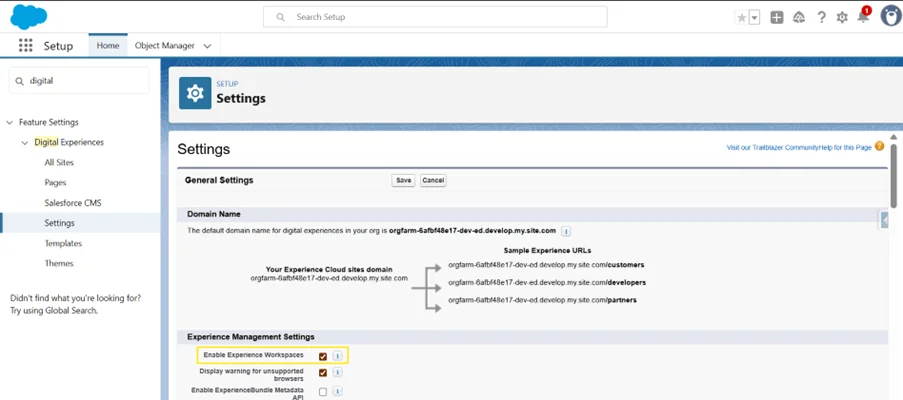
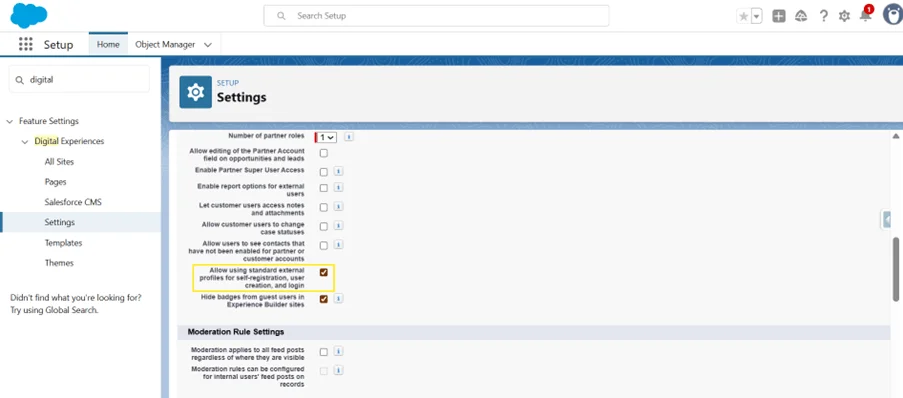
With Experience Cloud, B2B buyers get a dedicated platform where they can browse catalogs, manage orders, and interact with your brand.
Step 2: Enable Commerce Features
Once Experience Cloud is active, the next step is enabling Commerce Features. This ensures access to objects and workspaces that power your B2B store.
- Navigate to Setup > Quick Find > Commerce > Settings.
- Toggle Enable Commerce and save changes.
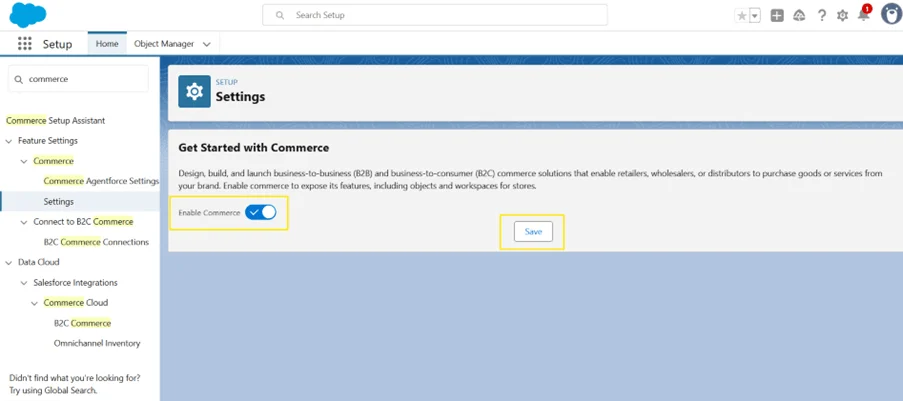
This unlocks foundational capabilities like pricing workspaces, catalogs, buyer groups, and entitlements.
Step 3: Enable Order Preferences
Order management is at the heart of B2B commerce. To ensure seamless order handling:
- From Setup > Order Settings, enable Enhanced Ecommerce Orders.
- Configure preferences for order summaries, delivery methods, and fulfillment.
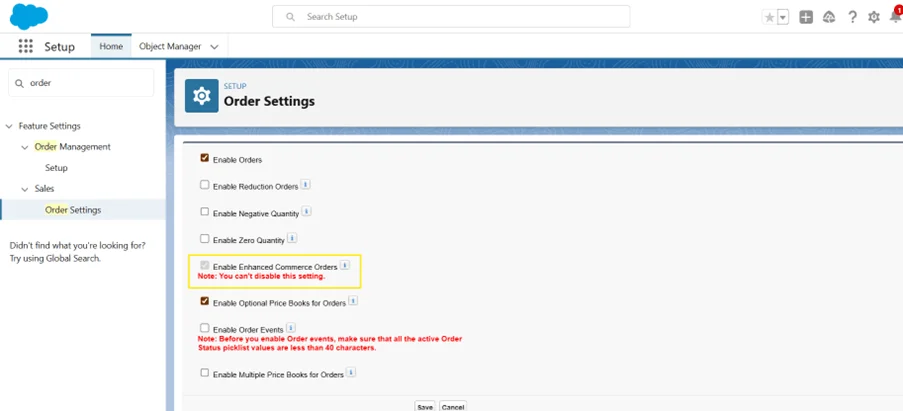
This setup gives businesses better control over large, complex B2B orders.
Step 4: Enable and Activate CMS
Content is as critical in B2B commerce as in B2C. By enabling Salesforce CMS within Lightning Experience, businesses can manage and personalise content for buyers.

- Activate CMS in Custom App Settings under System Administrator profile.
- Set key tabs like CMS Home, CMS Channels, CMS Experiences, CMS Workspaces to Default On.
- Do the same for commerce-related tabs such as Catalogs, Buyer Groups, Entitlement Policies, Pricing Workspaces, and Stores.
This creates a content-driven buying experience tailored to business customers.
Step 5: Configure Sharing Settings
To streamline collaboration and visibility:
- Set Default Internal and External Access to Public Read Only for catalogs, media groups, and order delivery methods.
This ensures transparency while maintaining security.
Step 6: Update Page Layouts
Customising page layouts in Salesforce Lightning Design System ensures smooth navigation and relevant information display.
- Add Product SKU to product layouts
- Include Categories and Commerce Entitlement Policies in related lists
- Adjust Order Summary and Order Delivery Group Summary layouts for B2B workflows
- Add Buyer actions to Salesforce Lightning Experience Actions

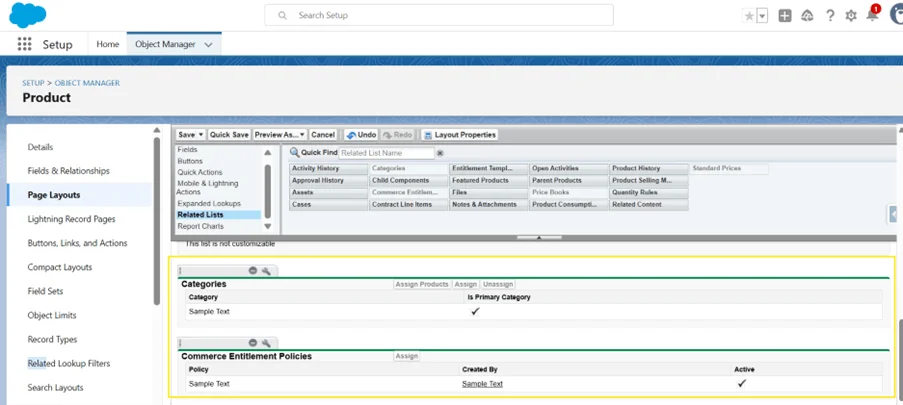
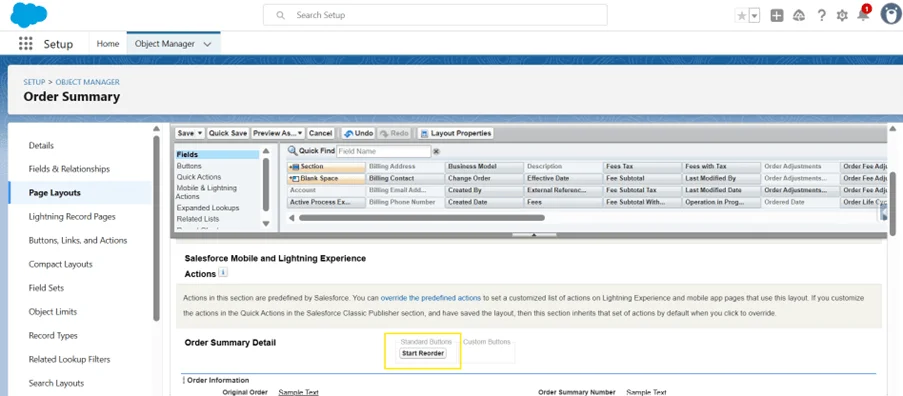
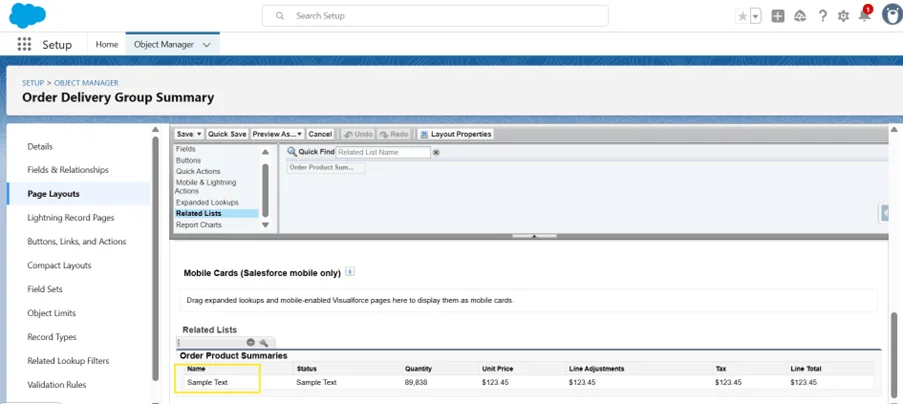
This makes the buying process intuitive and aligned with business needs.
Step 7: App Builder Settings
With Salesforce Lightning’s App Builder, businesses can create custom record pages.
- Edit Account record pages
- Drag and drop the Buyer Account component into layouts
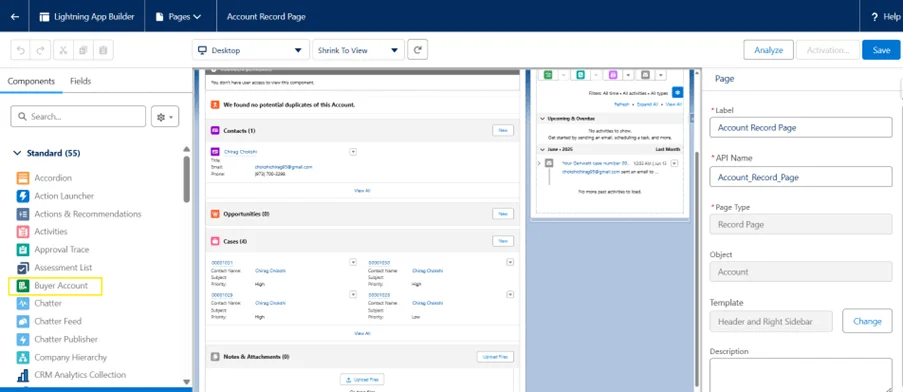
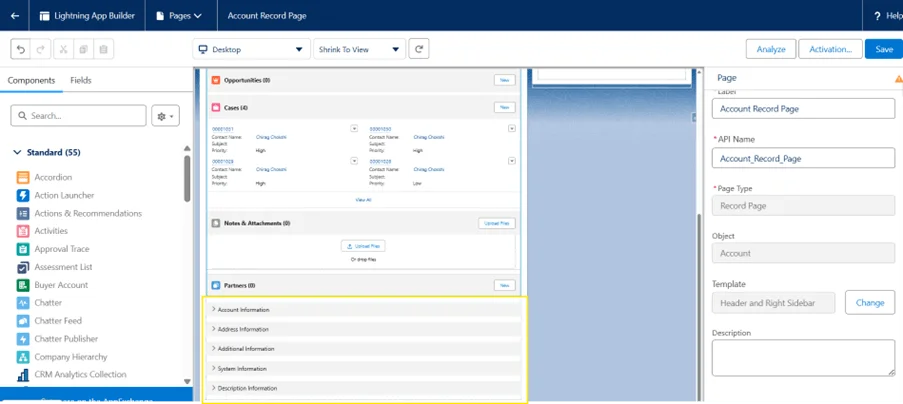
This ensures accounts are optimised for B2B-specific buyer interactions.
Step 8: Assign Permission Sets
To control access, create permission sets for Buyers, Buyer Managers, and Account Switchers.
- Buyer Permission Set: Assign Customer Community Plus license with read access to key objects (Accounts, Catalogs, Products, etc.) and full access to Carts, Orders, and Wish Lists.
- Buyer Manager: Clone the Buyer set and assign B2B Commerce Super User permissions.
- Account Switcher: Create an additional set with Account Switcher User permissions.
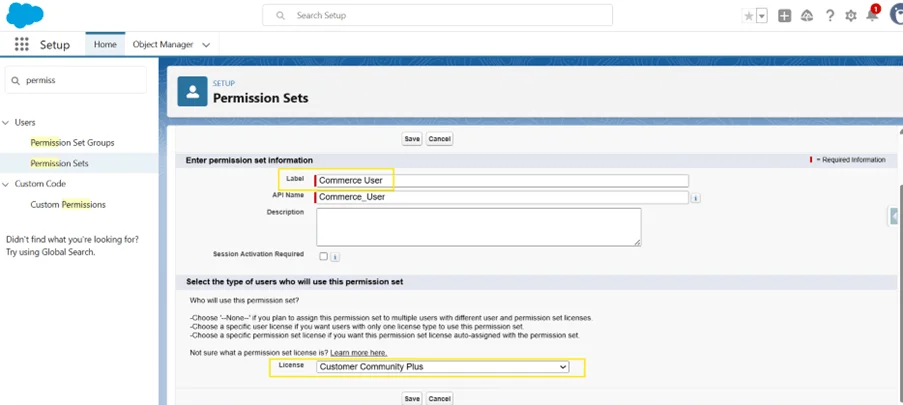
This ensures every role has the right level of access in the commerce ecosystem.
Step 9: Finalise Commerce Setup
Once permissions and layouts are ready, finalise the store setup:
- Launch Commerce Setup from App Launcher
- Install prebuilt reports such as Average Order Value, Orders By Date, and Total Orders
- Optimise navigation menus for merchandisers and admins
This completes the Salesforce Lightning B2B Commerce configuration.
Benefits of B2B Commerce on Salesforce Lightning
By implementing B2B Commerce with Salesforce Lightning Experience and the Salesforce Lightning Design System, businesses can:
- Deliver a modern, user-friendly interface for buyers
- Enable faster onboarding with customisable experiences
- Leverage real-time insights for smarter business decisions
- Scale with flexible pricing, catalogs, and entitlement models
- Offer a connected ecosystem for sales, service, and commerce
How Embitel Adds Value?
At Embitel, we specialise in building Salesforce Lightning Experience-based B2B Commerce solutions tailored to your industry.
Our team helps with:
- End-to-end implementation of Salesforce Lightning and Experience Cloud
- Custom UI development using Salesforce Lightning Design System
- Optimised workflows for order management, catalogs, and buyer groups
- Integration with ERP, CRM, and third-party systems
- Ongoing support and enhancements for scalability
With Embitel, your B2B Commerce platform becomes not just functional but a true driver of growth and customer satisfaction.
Conclusion
At the end of the day, B2B commerce success is measured in efficiency, growth, and customer satisfaction. Salesforce Lightning Experience delivers on all three and redefines business transformation like never before.
Whether you are starting fresh or upgrading your existing system, embracing Salesforce Lightning is the first step to building a future-ready B2B commerce ecosystem. And with salesforce services from a trusted partner like Embitel, the journey becomes faster, smoother, and more impactful.



